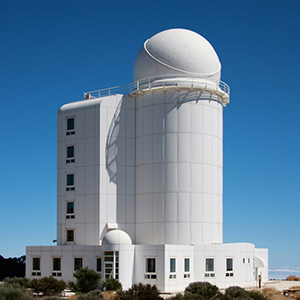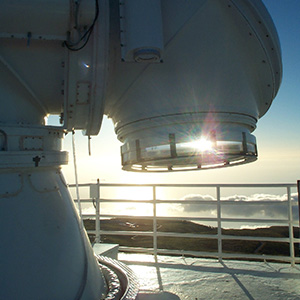Welcome to SOLARNET H2020
Integrating High Resolution Solar Physics
The study of the sun, or Solar Physics, is a vibrant field of research in Europe. It is the study of the fundamental processes occurring on the sun. This is primarily related to the dynamics of plasmas and their interplay with the sun’s magnetic fields, and how these processes vary in different regions of the sun, from its core to the surrounding corona.
The magnetic activity of the Sun plays a dominant role in virtually all processes in the solar atmosphere, however in-depth understanding of the magnetism of the sun is one of the greatest challenges. The intricate structure of the Sun’s magnetic fields, the solar activity cycle and the solar influence on the heliosphere represent major quests as they possess a direct impact on the human environment.
In particular, one of the most intriguing problems in all of solar physics is the identification of the mechanisms that heat the solar chromosphere (10 000 –
20 000 K) and corona (several million K) while the underlying photosphere reaches only about 6 000 K. There is no doubt that this spectacular energy dissipation comes from the magnetic fields. There are many candidate processes, like sunspots, prominences, flares, energetic particles, and coronal mass ejections but the precise mix is not yet known. Besides, precise understanding of the turbulent nature of magnetic fields, the origin of solar and stellar winds and heating of the Steller atmosphere, Plasma instabilities, origin of solar irradiance variability and the impact of solar magnetism on near-earth space weather are other open questions.
To understand these processes high-resolution observational of the physical conditions in the photosphere and the lower atmospheric layers if the Sun is essential alongside the development of numerical and computational techniques. Deciphering the complexity of solar magnetic fields and their dynamical and energetic effects should help to solve some of the key problems of solar physics.
The Swedish Solar Telescope (SST for short) is a telescope for observing the sun with an aperture of one meter in diameter. It is located in the Roque-de-los-Muchachos-Observatory on La Palma. It is operated by the Institute for Solar Physics of the Royal Swedish Academy of Sciences.
It is estimated that more than 600 scientists are actively involved in Solar Physics research in Europe. Funded by the European Commission under Grant Agreement number 824135, SOLARNET aspires at integrating:
- all group of scientists with complementary expertise in observational techniques, instrumentation, theoretical astrophysics, numerical simulations and modelling.
- the major European research institutions, research infrastructures, and data repositories in the field of high-resolution solar physics.
The main objectives of SOLARNET are
Foster Networking Activities & Mobility Programmes
- integrate small communities and foster European collaboration. The additional participation by private companies and non-European research institutions is expected to maximize the impact on the world-wide scale.
- increase the impact of high-resolution data by offering science-ready data and facilitating their retrieval and usage.
- train a new generation through student schools, a mobility program, and grant program to attend conferences.
- dissemination activities towards society
Conduct Joint Research Activities
- foster synergies between observational and theoretical research communities by organising meetings, where each present state-of-the-art methodologies.
- lay foundations for a combined use of synoptic and high-resolution facilities on ground and in space.
- enhance and spread data acquisition and processing expertise to the Europe-wide community.
- develop innovative post-focus instrumentation.
Ensure Access & Research Infrastructures
- realise transnational access to all European users.
- encourage the combination of space and ground-based data by providing unified access to pertinent data repositories.
- develop and build next-generation devices to correct for atmospheric turbulence.
This website also aims to serve as a repository of information for the European Solar Physics (EUSP) community, with community news, information about national and international conferences, employment and study opportunities, solar missions, and computing resource.


